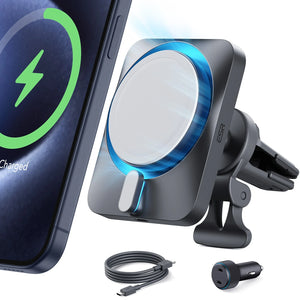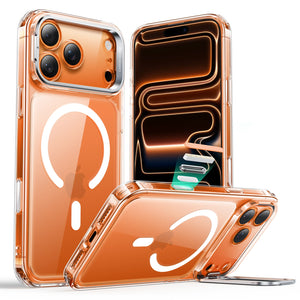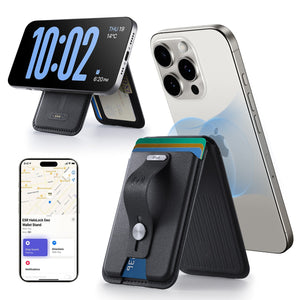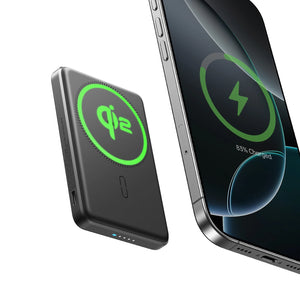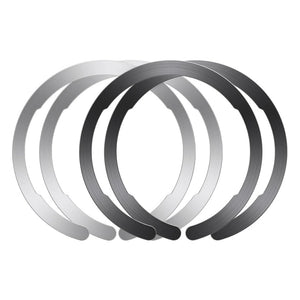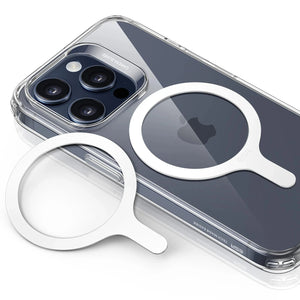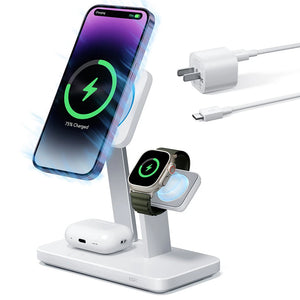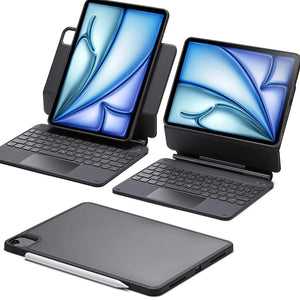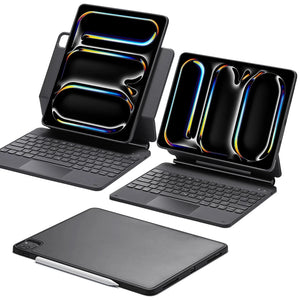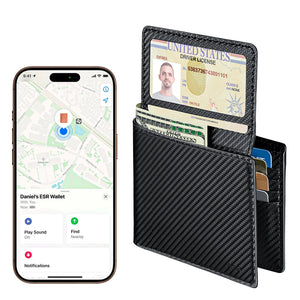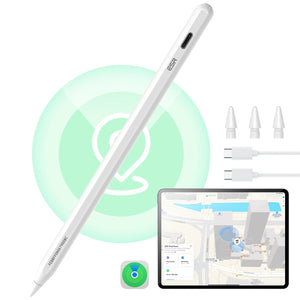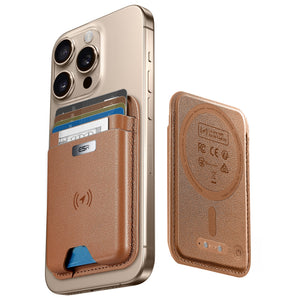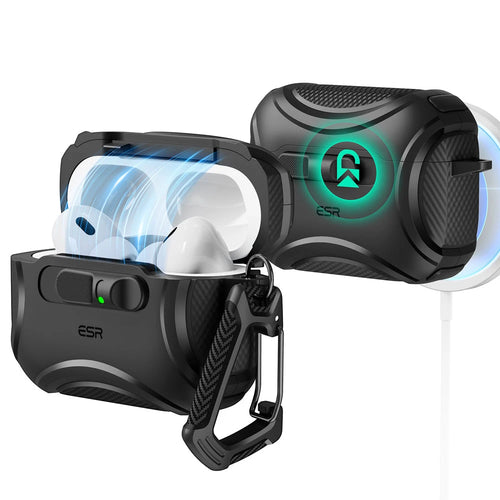If you are rocking an iPhone without jumping on the MagSafe technology, then you’re missing out on a lot. People may have their own opinions on this type of charger, but let’s clear all the myths surrounding the MagSafe charger. First things first, what is the MagSafe case exactly, and why is it getting so much buzz? Unlike regular cases, MagSafe comes with built-in magnets that snap perfectly into place and offer Qi2 wireless charging.
Setting that aside, the bug question remains: do you need a MagSafe case to use a MagSafe charger? This article will cover everything, along with various other queries people have, like which phones play the best part in them. While you might be still confused about whether iPhones are getting expense with the latest tariff race, let’s dive into all the nitty-gritty details and learn about the MagSafe charging.

What is a MagSafe Case?
MagSafe is a magnetic technology from Apple, built into the iPhone 12 series onward, and its cases are designed for various functions. They have built-in magnets that align perfectly with the MagSafe technology in iPhones, facilitating secure attachment. Moreover, these innovative designs allow you to still snap your iPhone onto a MagSafe charger for optimal Qi2 wireless charging.

This technology brings a new series of accessories that can be easily connected to your iPhone. There are MagSafe accessories such as wallets, car mounts, stands, and battery packs that are MagSafe compatible. They are designed to enhance how your device works and appears. Because there are so many materials and colors, you can pick based on appearance as well as function.
MagSafe vs. Regular Charging Cases: Key Differences Explained
A regular case might look similar, but when it comes to wireless charging, the performance can drop fast. Learn how that is by looking at the following comparison table between MagSafe charging and regular charging:

|
Features |
Regular Charging Case |
|
|
Compatibility |
Available on iPhone 12 and above |
Wide compatibility with many phones |
|
Functionality |
1. Built-in magnets 2. Seamless wireless charging experience 3. No cables are needed to ensure proper alignment |
1. Don't have magnetic features 2. Plug in a cable to charge 3. Offer solid protection |
|
Design |
Thicker than usual |
Comes in slim, sleek, and bulk shapes for extra protection |
|
Max. Power Output |
Up to 25W |
7.5W |
|
Alignment |
Strong magnet |
Moderate but not precise |
|
Pricing |
$8 to $50 |
$9 to $20 |
What are the Key Features & Benefits of MagSafe-Compatible Phone Cases?
1、Snap-On Speed. Magnets click instantly, locking your phone into the perfect spot for the fastest wireless charge possible.
2、Zero Bulk, Max Power. ESR Cases 1.5 mm thin design unleashes 25W Qi2 charging speed. The case doesn't slow your charging down.
3、Locked Down Hold. Your wallet and stand stay stuck. Strong magnets mean zero slipping and zero drops.
4、Tough Where It Counts. Protection against scratches and everyday drops is built into a case that just works.
5、Go Full MagSafe. Use any charger, mount, grip, or wallet you want. The case works with the whole MagSafe system.
Do You Need a MagSafe Case to Use MagSafe Chargers?
Yes, using a MagSafe charger can significantly enhance the charging process without overheating it. Moreover, you can speedily charge your phone when on the run and even get a nicer and safer way of charging. However, it's not absolutely necessary to get a MagSafe case to use the charger, but the experience would be quite different. The following significance of the Qi2 wireless charging will help you understand why you need these two things:

1. Fast Charging: MagSafe is faster than standard chargers since it contains magnets that enable wireless charging to be faster.
2. Accessories Attachment: It is very simple and safe to attach many different accessories to MagSafe cases, such as wallets, stands, etc.
3. Secure Connection: Magnet forces provide a hold that keeps accessories securely in position without any chances of them falling off.
4. Magnetic Connection: MagSafe's magnetic connector allows seamless attachment to compatible mobile devices with just a snap, making charging as easy as it can be.
Does a MagSafe Case Slow Down Wireless Charging? (Tested!)
This question does raise questions about the functionality of the Qi2 Magnetic Cooling Chargers. However, it's not an issue when it's a brand-new charger and was tested several times. After testing, ESR MagSafe work through case would feel no different than using a phone without a case. However, the real culprits are the cheap, non-certified cases or super-thick designs that block the charging coils.

They might stick with a legit MagSafe case without giving the real experience. Thicker or non-MagSafe cases can potentially slow down charging speed by interfering with the alignment between the phone and the charger.
Which Phone Models Work Best (iPhone 12-17, Samsung adapters)
So, which phone model do you think works the best, the iPhone or other mobile devices? Read the following table on how MagSafe charging evolved with every iPhone model after 12:

|
iPhone Models |
Works Best with MagSafe Charging Case |
|
iPhone 12 |
Slightly weaker compared to newer models |
|
iPhone 13 |
Improved magnet strength for stable charging |
|
iPhone 14 |
Thermal efficiency: no heat buildup during charging |
|
iPhone 15 |
USB-C introduced stronger charge with excellent compatibility |
|
iPhone 16 |
Strongest, fastest, and improved charging |
|
iPhone 17 |
Just Click and Charge. Forget alignment headaches. The magnets lock you into place for optimized, fast power on any MagSafe or Qi2 pad. |
If you have a Samsung, they also come up with adapters that are MagSafe-compatible cases. They might not be as seamless as the iPhone ones, but they get the job done and offer the same clicky, powerful magnetic charging vibe.
Pro Tips: Maximizing Charging Speed with MagSafe Cases
Let’s end the article with some solid tips on how to maximize the charging game in the given points:

1. Use an official MagSafe charger or a certified third-party one.
2. You should go with a high-quality MagSafe case, preferably from Apple or a trusted brand like ESR.
3. Keep your phone and charger clean with no dust or gunk entering the magnets.
4. Avoid thick or multi-layered cases as they might slow down the charging.
5. Ensure to plug your MagSafe charger into a 20W+ USB-C power adapter for a faster charging experience.
People Also Ask
1. Can You Charge Your Phone with a MagSafe Case?
Yes, you can 100% charge the phone with a MagSafe case, as they're designed to work perfectly with MagSafe chargers. They easily snap your phone into the ideal position for efficient wireless charging.
2. Do Magnetic Phone Cases Interfere With Wireless Charging?
If the magnetic case is MagSafe compatible, there won't be a problem. But if it's a normal magnetic case, like one with some random metal plate, that's when problems come. So, pay attention to the best MagSafe charging cases.
3. Is Wireless Charging Good for iPhone Battery Health?
Apple builds its phones with wireless charging in mind, and it includes native features such as Optimized Battery Charging to keep the battery in top shape. However, frequent fast wireless charging does generate more heat, which is why buying them from ESR is the perfect option.
4. Should I Use a 20W or 30W Charger on My iPhone?
Both options are safer to use, but 20W is not recommended as it's slower than the 30W one. It gives you a slight edge, especially if you want to charge your iPhone a bit faster. So, using a 30W charger won't "overcharge" it and just gives the phone more juice to work with.





